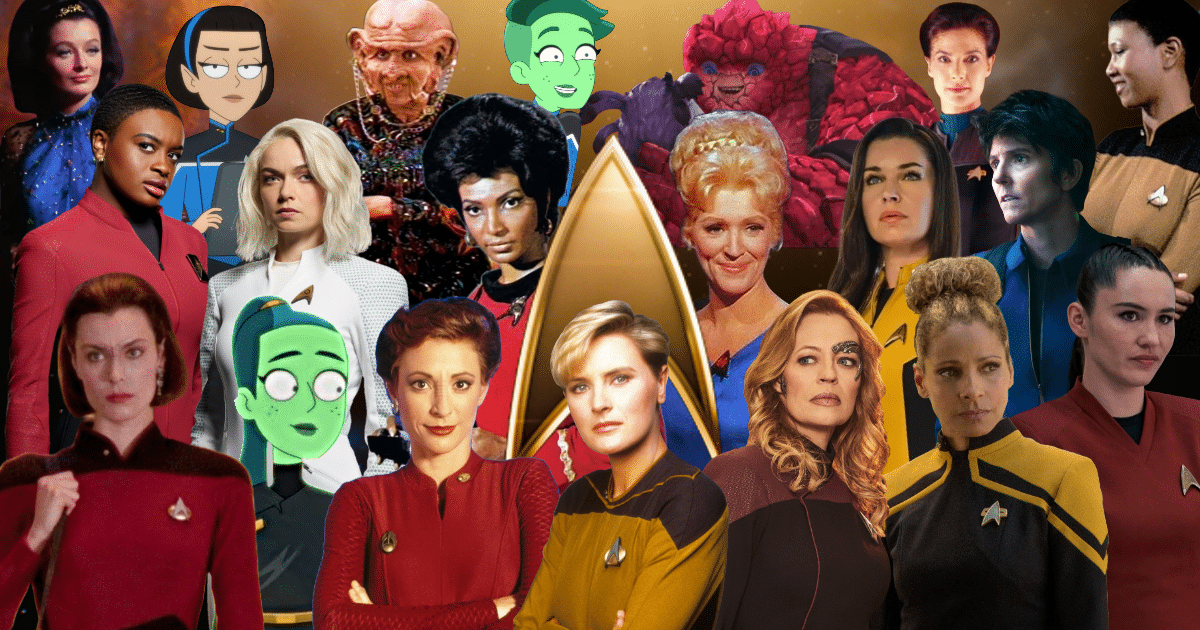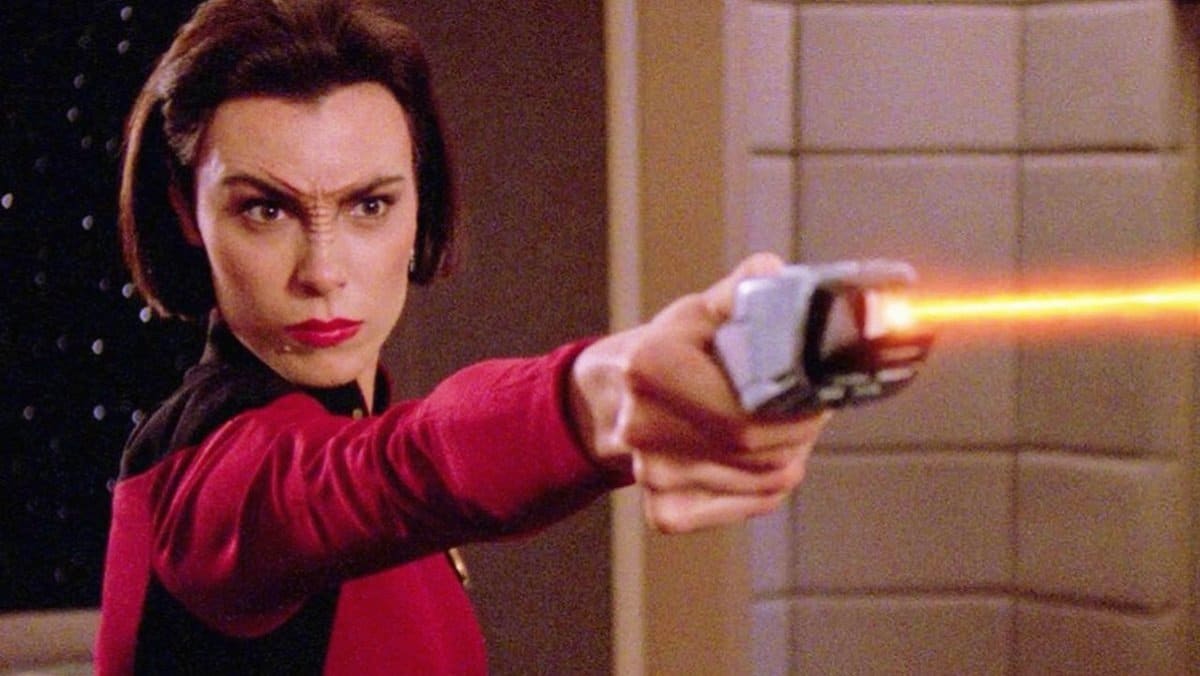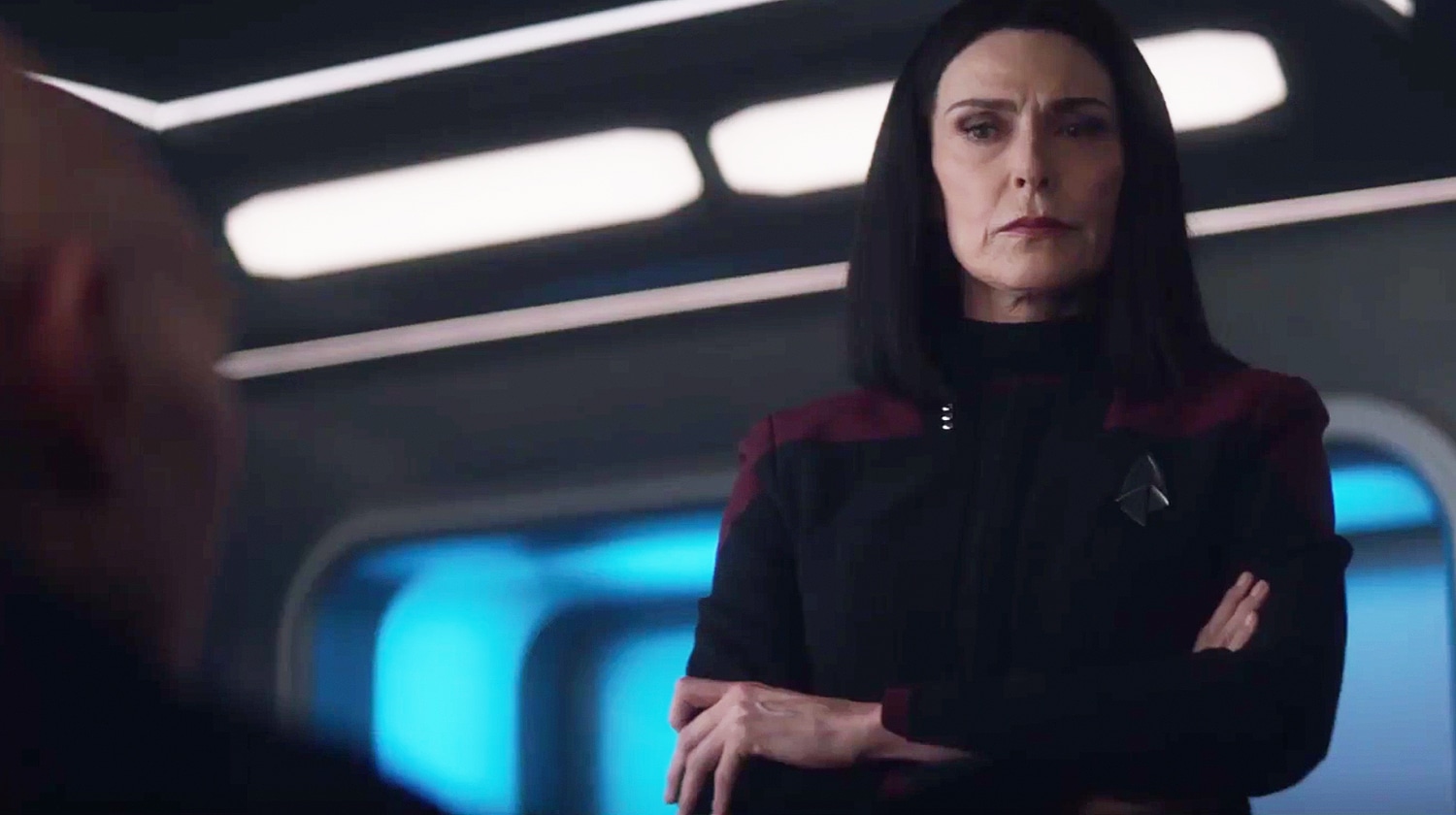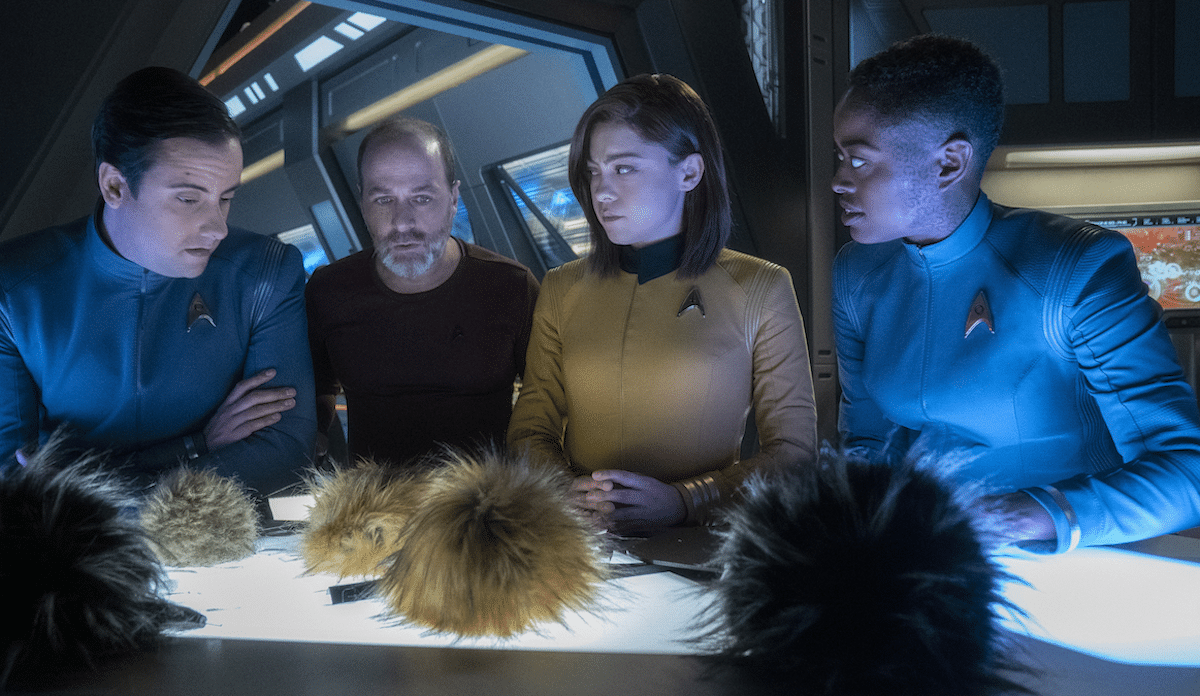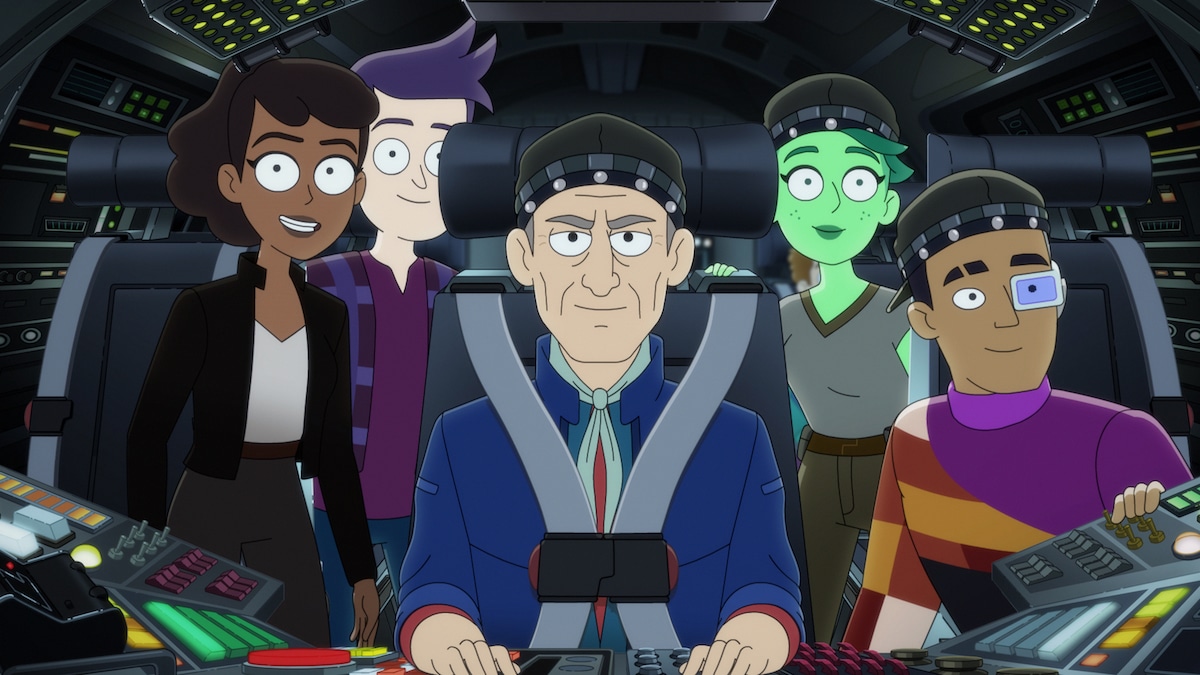In our 3rd week of showcasing the Women of Star Trek for Women’s History Month, the Beat’s Trek Squad looks at the Women you want backing you up in a space battle or bar fight. From hand-to-hand combat, phaser proficiency, or tactical expertise, these Star Trek Women are more than a pretty face, they can kick ass, take names and make it look cool.
Kira Nerys
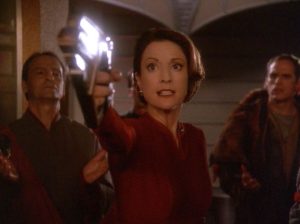
When I think of Star Trek fighters, Deep Space 9’s First Officer Kira Nerys (Nana Visitor) is at the top of the list. The ultimate underdog, a former resistance fighter, and the right hand of DS9’s commanding officer Benjamin Sisko, she’s a get things done type of person any way she sees fit. Growing up under the Cardassian Occupation Kira could have become an angel of death, instead, she takes these horrific experiences and becomes possibly the most complex character in Star Trek, as a person with a very dark past it would be easy to have her be all about vengeance, her vision of the future is one not of an eye for an eye, but of true justice, and that is what she fights for.
A proficient hand-to-hand combatant and fighter pilot, knowledgable in weapons and explosives, and expert in guerrilla warfare tactics and strategy. She’s been stabbed with a Klingon knife, she pulled it out and beat her opponent, kidnapped while pregnant, but she was still able to get free and handle her kidnapper, and jury-rigged a replicator to explode when the Defiant was stolen. When the Dominion took control of DS9, she led the resistance giving Starfleet critical information and buying the Defiant time to stop the Dominion fleet from entering the Alpha Quadrant. But as quick as she is to grab a phaser and set it off, she is also ready to battle on the different levels of political, religious, and ethical. And in these battles, she truly shines going up against anyone who opposes her view or mission.
Possibly the biggest conflict she faced was having to battle her complex emotions regarding her former enemies the Cardassians. From having to face the reality that her Mother was a collaborator during the occupation, giving comfort to a dying Cardassian, aiding Gul Dukat against the Klingons, and eventually helping Cardasia wage an insurgency movement against the occupying Dominion forces. While in enemy territory, she had to battle the Cardassians who saw her as a reminder of their failure, refused to follow her advice in creating rebel cells, and still had to survive fighting the Dominion on their missions. — GC3
La’an Noonien-Singh
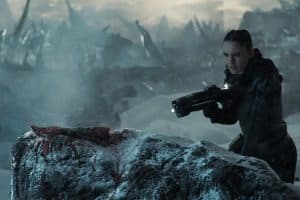
Her name carries such baggage that no one really knew what to think about her when La’an was announced, especially since some later Enterprise crew like Chekov knew nothing about Khan Noonien-Singh in The Original Series. Instead of a raging eugenicist who judged everyone around her, we got an intense, capable woman who judges herself nearly as much as she’s judged by so many around her based on her name alone. We also got to see Trek take on PTSD again, an area where it’s succeeded beautifully in the past. In season one La’an’s struggles with her PTSD with the Gorn informed her character, were dealt with respectfully, and fleshed her out. They were part and parcel of who she was like PTSD becomes in real life.
Unfortunately in season two, the PTSD seems to have been forgotten. She went away to work on it and unlike what happens most often in real life it seems to be completely gone. All the same, in season two La’an remained strong and fierce and even got to show her emotional side in regard to James Kirk. This relationship that cannot ever be is far from the usual will they/won’t they and lets her show her fighting her heart even as she tries to allow herself the room to trust, both massive challenges for someone who is head of security for a starship that’s constantly under threat from without and sometimes from within.
La’an’s struggle to know herself, to be herself, to trust friends to actually be friends, and to do her best by the crew around her is a compelling storyline of a woman trying to figure out what it even is to be a woman, a person, in light of her family and traumatic backgrounds. She’s an example of how you can be not perfect and still be a hero, as well as how sometimes you can do everything right and still not have things work out. She’s real and she’s relatable. — KL
Ro Laren
The first time we meet Star Trek’s first Bajoran, Ro Laren (Michelle Forbes), she is being released from the stockade and temporarily assigned to the Enterprise-D, an assignment that doesn’t sit well with most of the crew, but she doesn’t shy away or back down from the unwelcome vibes of the crew, making sure that she was properly addressed as Ensign Ro and not conforming to the crews’ norm.
That inner strength of being able to stand up for herself came from growing up under the brutal Cardassian occupation of Bajor. Her temporary assignment would become permanent as she served on the Enterprise-D helping to foil Ferengi hijackers, surviving a failed Romulan experiment that transformed her and Geordi La Forge into phased beings, and served on the bridge during a shipwide disaster.
She would take the challenging Starfleet Advanced Tactical Training course, infamous for having a high washout rate, and she would use that training to infiltrate the Maquis, a group of Federation citizens that were abandoned by the Federation as part of the peace treaty with the Cardassians. While undercover she would become sympathetic to the plight of the people living in the DMZ, eventually choosing to take up their fight and becoming one of them.
Ro would eventually turn herself into Starfleet, serve her punishment, and be reinstated. Ro’s return to Starfleet would be instrumental in uncovering a Changeling plot to compromise Starfleet. As part of Starfleet Security, she would act as Worf’s handler in investigating suspicious acts among the Federation. To give Picard and the Titan-A crew a chance to win the day and escape, she provides him with all of the information she’s gathered about the conspiracy and sacrifices herself by ramming her shuttle into the warp nacelle of the USS Intrepid. — GC3
Seven of Nine

When Seven of Nine (Jeri Ryan) was first introduced in Star Trek: Voyager’s season 4 premiere, it’s clear that many of the ship’s crew did not trust the liberated Borg drone. Nevertheless, and thanks in no small part to the aggressive inclusiveness of Captain Kathryn Janeway (Kate Mulgrew), Seven became a fully integrated member of the Voy crew. However, Seven isn’t just a fighter in the sense that she is adept in battle (although she is that). She’s also a fighter in that she’s had to fight to find herself.
During the remainder of Voy’s return home from the Delta Quadrant, Seven fought her way from an assimilated drone to a self-actualized individual. Forging powerful bonds with other crew members, including the also-evolving Emergency Medical Hologram (Robert Picardo), Seven resisted the threat of re-assimilation several times. Furthermore, she was eventually even able to help other freed Borg drones deal with their own respective returns to individuality.
After returning to Earth with the rest of the Voy crew in Voyager’s season finale, “Endgame,” Seven briefly joined Starfleet. However, she soon became disillusioned with the shortcomings of the organization, and chose to resign and become a Fenris Ranger instead. These rough-and-tumble freedom fighters are known for offering assistance to those who have been overlooked by the Federation. However, her adventures with Jean-Luc Picard (Patrick Stewart) over the course of the first two seasons of Star Trek: Picard inspired her to rejoin Starfleet.
But while Seven may have rejoined Starfleet, the organization is not without its problems. As the First Officer on the USS Titan-A, Seven must fight against the archaic beliefs of Captain Liam Shaw (Todd Stashwick) her prejudiced commanding officer (who even elects to consistently deadname her to her face, at least until he’s bleeding out). But Seven continues to fight against both prejudice and the Borg, refusing to abandon her post in spite of a variety of challenges.
By the conclusion of Picard season 3, Seven has been promoted to Captain of the Titan, now rechristened to be the USS Enterprise-F, with her (ex?) lover Raffi Musiker (Michelle Hurd) serving as first officer. The fight may not be over, but Seven’s shown time and again that she won’t surrender — a trait also possessed by Musiker. No matter what their gender, few fighters in the galaxy can hope to match the ferocity of Seven and her indefatigable crew. Breen, changelings, and any other antagonists: consider yourselves warned! — AJK
D’Erika Tendi
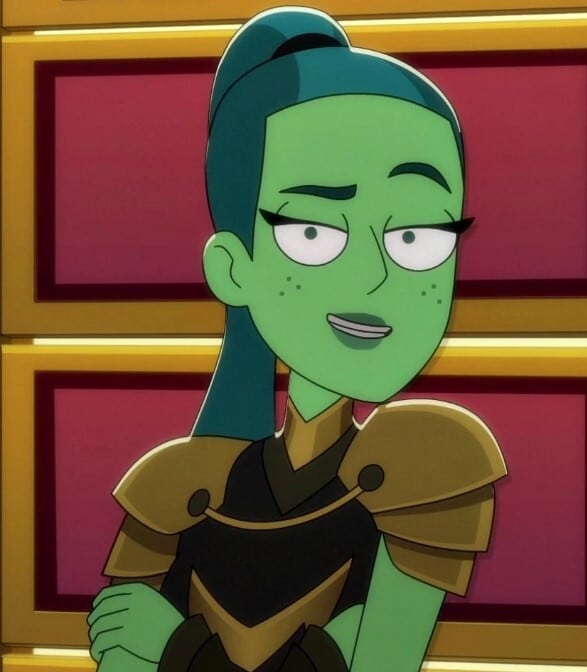
The younger sibling to D’Vana Tendi, D’Erika grew up in the shadow of her sister. As the “Prime Daughter,” D’Vana was expected to lead their family pirating syndicate, however when she left to join Starfleet those responsibilities were suddenly thrust upon D’Erika. When D’Erika faked her own kidnapping in order to force her sister to come home the two fought in order to hash out their grievances towards one another. D’Erika felt abandoned and left alone, frustrated by trying to live up to D’Vana’s reputation.
Eventually the two made-up and became friends again. D’Erika then got married and continued her leadership role in the Orion Syndicate.
D’Erika is a formidable fighter and leader, having helped to maintain her family’s status within Orion pirating culture. She wields the Moonlit Blade as the new “Prime Daughter” against her foes, and has proven herself as someone willing to grow and accept when she’s wrong but also confront others when she’s hurting. We definitely haven’t seen the last of her yet… — DC
Tasha Yar
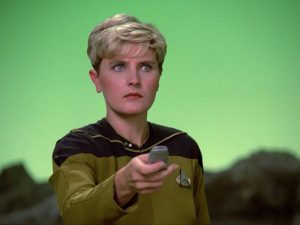
In the 90s, brunettes were smart, redheads were angry, and blondes were air-headed sexbombs, generally speaking. As an AFAB person with blond hair growing up at the time, there were very few blonde characters on television that I felt were at all like me… and then there was Tasha Yar. From day one she was tough but funny, strong but also compassionate. She stood her ground in a field that was coded as more masculine, and even was the superior officer in charge of security despite there being a Klingon on the ship. Even in the incredibly racist episode “Code of Honor” she keeps her head, fights fiercely, and rights a wrong.
She returns after her death in an alternate-universe episode and is willing to sacrifice herself to not only right the universe but try to help save fellow officers. She’s dedicated and noble to both ends. Let’s not also forget that behind the scenes the actress was being harassed, to the point that her leaving the show and getting free was ‘punished’ by the character of Tasha being raped.
Tasha Yar was, in my opinion, the real beginning of Star Trek really taking a hard look at gender roles and choosing to discard them. You still did have deliberate eye-candy happening, but the women got to have more strength and brains, and the men got to be more sensitive and compassionate. That’s not to say that TOS didn’t have great moments of ignoring gender norms, but Tasha Yar took gender norms and defenestrated them and I’ll forever love her for that. — KL
Raffaela “Raffi” Musiker
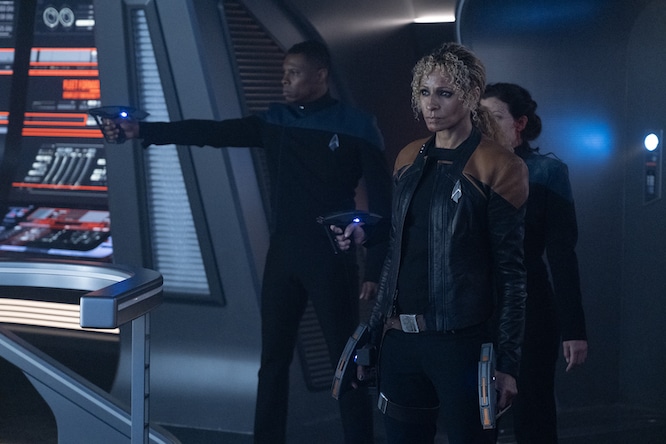
I’m not entirely convinced there would be drug addiction in the 25th century in Federation planets, as poverty and other socioeconomic factors are the leading causes of addiction (followed by social stigma, which is definitely still a thing in the future, if how Raffi’s family reacts to her struggle is at all the norm). However, if addiction is still around in the 25th century, I hope at least some of the galaxy is more enlightened than Musiker’s former clan—and to me, it seems like they are. After all, Jean-Luc gave Raffi, who is now clean, a second chance at life among the stars, and especially outside of genre entertainment, a second chance is something few addicts get.
February 2024 was my 13th sober birthday. So, speaking from experience, addicts are fighters (yes, even the ones who are still battling the disease), which makes Raffi double the fighter she already was (the woman also has some killer moves that even make Worf go, “WOW”). — ROK
Join us next week for our final installment as we give it up for the Women who run the show.
Keep up with all of The Beat’s Star Trek coverage by clicking here.


